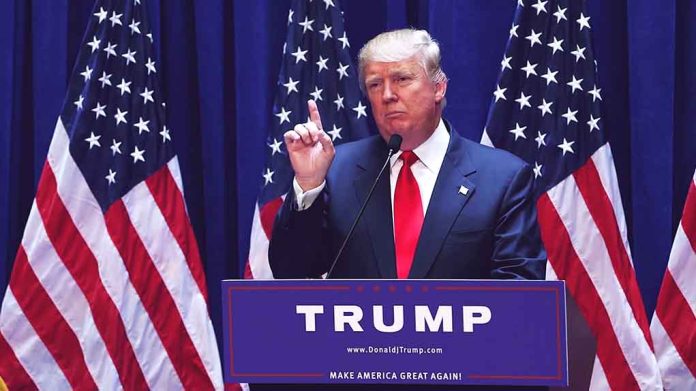
President Trump’s executive order on wildfire management mandates “raking the forests” to prevent devastating fires like those that ravaged Los Angeles in January 2025, putting common sense and local control at the forefront of national disaster prevention.
Key Takeaways
- President Trump’s executive order streamlines federal wildfire initiatives by consolidating programs within 90 days under the Secretaries of Interior and Agriculture.
- The order emphasizes brush clearance and forest management, addressing years of mismanagement that has contributed to catastrophic wildfires.
- Local preparedness is prioritized through partnerships and incentives for responsible land management practices.
- Technology enhancements including AI, data sharing, and innovative modeling will be implemented to improve wildfire prediction and response capabilities.
- Federal barriers to effective wildfire prevention will be eliminated, including rules that hinder prescribed fires and fire retardants.
Trump Takes Action on Forest Management
Following devastating wildfires in Los Angeles this January, President Trump has taken decisive action by signing an executive order that fundamentally reforms wildfire prevention and management across the nation. The comprehensive order targets the bureaucratic inefficiencies that have hampered effective forest management for decades, while empowering state and local authorities to implement proven prevention strategies. By consolidating wildland fire programs under the Secretary of the Interior and Secretary of Agriculture, the order eliminates redundancies and creates a unified approach to wildfire management that has long been needed.
“For too long, State and local wildfire responses have been slow and inadequate due to reckless mismanagement and lack of preparedness,” said President Donald J. Trump.
Brush Clearing and Forest Management
At the core of Trump’s executive order is an emphasis on what he calls “raking the forests” – systematic brush clearance to reduce fuel loads that contribute to catastrophic wildfires. This practical approach addresses a key factor in wildfire intensity that environmental ideologues have long ignored. The order specifically directs federal agencies to modify or rescind rules that have prevented the use of proven fire prevention techniques, including prescribed burns and fire retardants, which have been hindered by excessive regulation. Additionally, it promotes innovative uses of woody biomass to reduce fuel loads, turning what was previously considered waste into a potential resource.
“Wildfires threaten every region, yet many local government entities continue to disregard commonsense preventative measures,” said President Donald J. Trump.
Technology and Local Empowerment
The executive order mandates the development of a comprehensive technology roadmap that will revolutionize how we fight wildfires. By incorporating artificial intelligence, advanced data sharing, and innovative modeling techniques, firefighters will have access to tools that dramatically improve their effectiveness. Historical satellite datasets will be identified and made publicly available, enhancing wildfire prediction and response capabilities. These technological advancements will be paired with a focus on local empowerment, as the order encourages partnerships with local communities and provides incentives for responsible land management practices.
“Firefighters are forced to rely on outdated technology and face challenges in quickly responding to wildfires because of unnecessary regulation and bureaucracy,” said President Donald J. Trump.
Practical Resources and Implementation
Taking a practical approach to resource allocation, the order directs the Secretary of Defense to evaluate the potential sale of excess aircraft and parts to support wildfire mitigation and response efforts. This common-sense measure could quickly bolster firefighting capabilities without requiring new appropriations. The order also addresses the challenges faced by electrical utility companies, calling for a review of wildfire-related litigation to support prevention and mitigation efforts. Performance metrics will be developed to ensure accountability in wildfire response, with agencies required to identify and revise rules that impede effective wildfire prevention.
President Trump’s executive order builds on his previous actions to safeguard the environment and communities, including prioritizing water routing to Southern California. During his visit to Los Angeles to inspect wildfire damage, the President promised continued federal support while emphasizing that prevention through proper management is the key to avoiding future disasters. With this comprehensive approach combining streamlined federal coordination, cutting-edge technology, and local empowerment, Trump’s order represents a significant step forward in protecting American communities from the devastation of wildfires.














